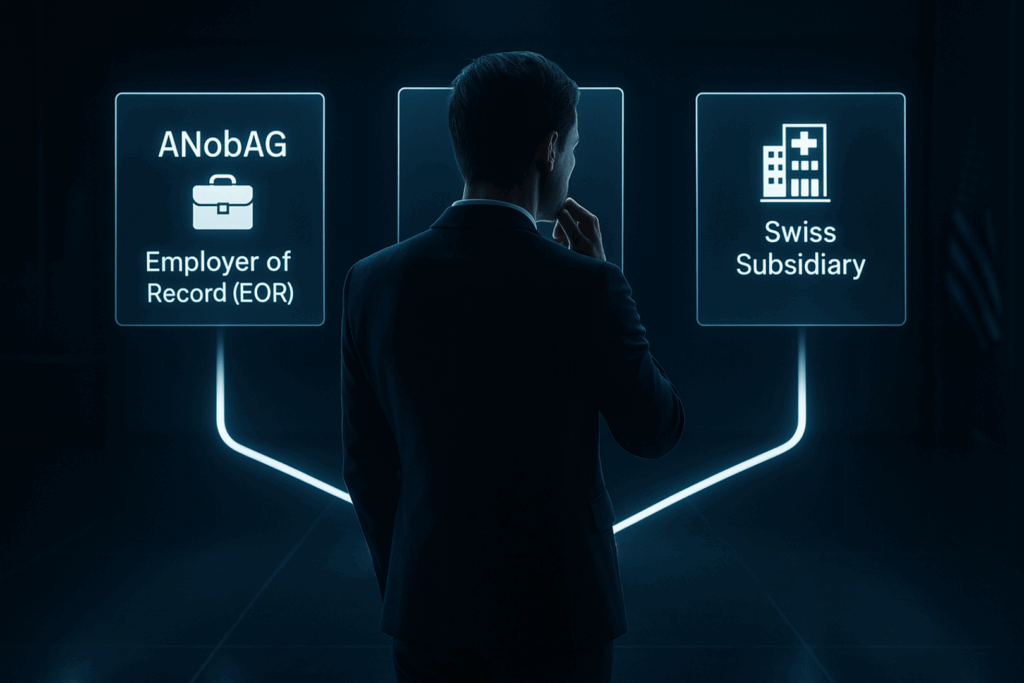How Does the 3rd Pillar Work?

Pillar 3 in the Swiss pension system is used for private retirement provision. This ensures that you can maintain your standard of living in retirement. Without the 3rd pillar, the income in old age would be reduced to 60% of the last income, which would be accompanied by considerable quality cuts. Providing for retirement via Pillar 3 is therefore particularly important. In this article we will answer the most important questions about private pension provision.
What Is the 3rd Pillar?
The 3rd pillar is made up of two components: pillar 3a – also called tied pension provision, and pillar 3b – the untied or free pension provision. The earlier in your working life you pay into Pillar 3a, the better. This allows you to save money for many years and then use it in old age to close the pension gap.
Pillar 3a
Pillar 3a is the tied pension plan and is primarily used to provide for old age. It is tax-subsidized, which is why it is also suitable for tax optimization. You can make payments into pillar 3a up to a certain maximum amount. In 2022, this is CHF 6,883 per year for employed persons who also pay into a pension fund; and 20% of net income for persons without a pension fund (maximum amount per year: CHF 34,416).
Pay in and Pay Out Tax-Free
Contributions can be deducted from taxable income, reducing the tax burden. Access to the money saved in pillar 3a is granted five years prior to the statutory retirement date. In special cases, an early withdrawal is also possible, for example if the money is needed to buy a home.
Pillar 3b
In addition to the state-subsidized pillar 3a, there is also pillar 3b, which serves as a free pension plan. There is no maximum amount in pillar 3b. You can pay in as much as you want, and you can access the money in it at any time. Pillar 3b serves as a supplement to Pillar 3a.
Tax-Free Payout Under Certain Circumstances
The contributions paid into pillar 3b are not tax deductible. All saved assets in this pillar must be declared as assets in the tax return, which increases the tax burden. On the other hand, the payout from pillar 3b is tax-free, provided the following criteria are met:
- Term of the contract at least 5 years
- Payment is made after the age of 60
- Contract is concluded before the age of 66
How Do I Make Payments Into the 3rd Pillar?
For both Pillar 3a and Pillar 3b, there are various offers from banks and insurance companies that you can select according to your individual needs. With many offers, you can also choose whether you want to pay in at regular intervals (e.g. monthly or quarterly), or a higher sum once.
With pillar 3a, you can choose between the following solutions:
- Savings account with fixed interest rate
In a savings account, your deposits earn interest at a fixed rate that is higher than that of an ordinary savings account. However, keep in mind that in the current low-interest times, interest earnings are very manageable. - Fund-linked deposit
You invest your deposits in a fund. In this case, you also bear the investment risk, because in contrast to the fixed-interest variant, the development of your balance depends on the development of the stock market. This means that higher returns are also possible. - Risk insurance
Policies to cover you in the event of disability or death can also be purchased in pillar 3a. You do not save up any assets, but simply protect yourself in the event of an emergency, so that you or your dependents receive money from the insurance later if something happens to you.
With pillar 3b, you have similar choices. Many insurance companies offer you a life insurance policy as part of your 3b provision, into which a fixed amount is paid for between 20 and 30 years. After a set term, the sum is paid out to you, or to your dependents in the event of your death. Pure money-linked investment options are also possible with pillar 3b. Therefore, compare different providers with each other to find the right offer.
Do I Need a 3rd Pillar?
It is up to you to decide whether you need pension provision from Pillar 3. However, if you rely only on the state pension plan, you will have to reckon with a strong loss of income in old age, because it only covers 60% of your previous income. If you want to maintain your standard of living in old age, we recommend that you make provisions under Pillar 3a.
Is Pillar 3A or 3B Better?
There is no general answer to this question, because it depends on your income situation. For example, you can only pay into pillar 3a if you are employed and your income is subject to AHV contributions. In contrast, anyone can pay into pillar 3b.
The features of pillar 3a at a glance:
- There is an annual maximum amount that can be paid in at most
- Savings can be withdrawn at the earliest five years before retirement, or earlier in special cases (e.g. when buying a house or paying off a mortgage)
- Payments can be deducted in full from taxable income, which makes pillar 3a an excellent way to optimize taxes
- You benefit from a reduced tax rate when you withdraw your money
The features of pillar 3b at a glance:
- There is no maximum amount that can be paid in
- Insurance premiums can be deducted from income as a lump-sum deduction
- Payout is tax-free under certain conditions, otherwise the payouts are subject to wealth tax
- Term is freely selectable
If you do not know what is worthwhile for you in your case, contact a tax expert. They will calculate various options for you so that you can see which pension plan is the most suitable for you, also from a tax perspective.
Tax Return Cost Calculator
Do you seek a quick idea of the cost of our tax return service? If we have sparked your interest, you can send it to us without reservations, as it is a non-binding request. We will contact you promptly to discuss your situation with you.


